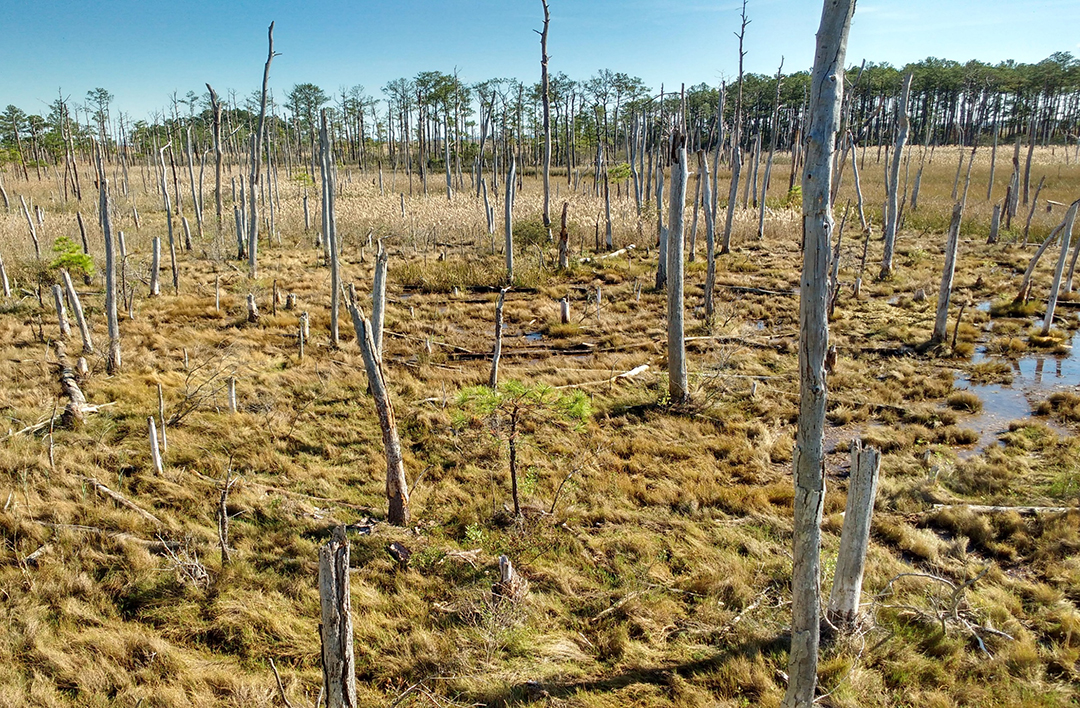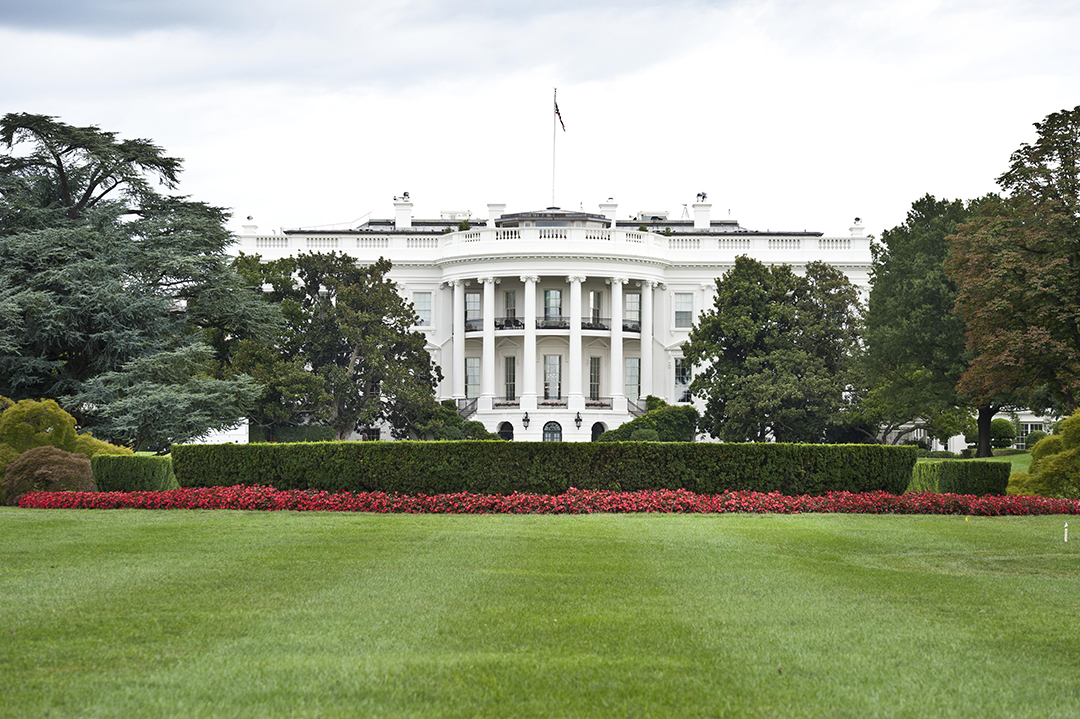As sea levels continue to rise along the Chesapeake Bay, more and more rural land neighboring the bay will be reclaimed as wetlands. Keryn Gedan, an assistant professor of biology at the Columbian College of Arts and Sciences, recently published the first effort to synthesize the growing number of studies of land conversion driven by sea-level rise.
Water levels are rising along the coast of Maryland, which causes saltwater to permeate the soil and create an environment hostile to trees and agricultural plants. In the Chesapeake Bay region alone, more than 150 square miles of forest have converted to marshland since the mid-1800s. This phenomenon creates “ghost forests,” stands of dead trees with new marshlands lapping at their bleached trunks. Rates of forest retreat are accelerating around the world, with mid-Atlantic forests retreating inland more than twice as fast as they were 150 years ago.
Dr. Gedan’s paper, published alongside Matt Kirwan, an associate professor at William and Mary’s Virginia Institute of Marine Science, highlights the growing recognition that sea-level rise will mostly impact rural, privately-owned land. Many landowners see upland-to-wetland conversion as an economic loss, however wetlands provide valuable ecosystem services to the public by improving water quality, supporting marine fisheries and protecting against flooding.
“Uncertainty regarding local flood-defense strategies is the key thing that limits our ability to predict land conversion and its impact on coastal ecosystems,” Dr. Gedan said. “The process of upland conversion could offset or even overwhelm wetland losses expected within the next century but is highly dependent on the decisions of rural private landowners.”
The researchers note that the scientific community’s emerging recognition of this issue has generated widespread interest in better understanding the many factors that influence the extent and pace of upland-to-wetland conversion.
These include the rate of sea-level rise, slope of the upland, tidal range, amount of sediment available for vertical marsh growth, salt tolerance of different tree and grass species and—critically—the presence of levees and other human barriers both large and small.
“When uplands convert to wetlands, there’s a loss in value for private landowners, but a gain in ecosystem services for the general public,” Dr. Kirwan said. “Future research should help identify the management decisions that could best offset economic losses while improving the function of new wetlands.”
Sea-level rising and climate change will have an impact on the entire country. Some wetland areas will expand while others shrink. The area of dry land predicted to convert to salt marshes and mangroves on the Gulf Coast is nearly three times larger than current Gulf Coast wetlands, Dr. Kirwan said. This area is larger than the current extent of coastal wetlands in the continental United States.
Because landowner attitudes and experience with current mitigation efforts suggest local resistance, Dr. Gedan and Dr. Kirwan concluded their review with three recommendations to help guide future research and land-management decisions in rural areas:
- First, conduct additional studies on the effectiveness of privately-maintained barriers such as berms and roads. The knowledge gained could minimize the cost of abandoning or restoring rural lands and help landowners, government and environmental organizations prioritize conservation efforts.
- Second, study whether interim approaches—planting salt-tolerant crops, leasing land to hunt clubs, harvesting susceptible timber—could compensate for changes in the value of private property versus ecosystem services.
- Third, examine how policy incentives might shape the future of upland-to-wetland conversion. Offerings such as U.S. Department of Agriculture’s Conservation Reserve Program, in which farmers are paid to remove environmentally sensitive land from production, could be repurposed as instruments for adapting to sea-level rise. The authors also recommend that policymakers use regional predictions of wetland gain or loss to set incentives for prioritizing wetland migration or upland protection.
Over the past few years, residents in the Chesapeake Bay region have become more open to discussing the topic of sea level rise and are more likely to identify it as a cause of the land conversion instead of simply calling it flooding, Dr. Gedan said. This is a positive sign as the situation continues to progress.
GW students have had the opportunity to be a part of Dr. Gedan’s work related to the Chesapeake Bay region, including helping out with field work and getting involved with experiments based in the Wilbur V. Harlan Greenhouse.
The paper “Sea-level driven land conversion and the formation of ghost forests” was published last month in Nature Climate Change.




